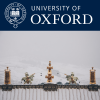The Transformation of Nyingma Identity: Some Key Developments in Contemporary Nyingma Monastic Education
This presentation, which draws upon the speaker’s ongoing PhD research, will examine some of the key developments that have taken place in Nyingma monastic education, both in ‘exile’ and inside Eastern Tibet, since the ruptures brought about by the Maoist invasion of the 1950s. Although the terms ‘traditional’ and ‘modern’ must themselves be chronologically defined and carefully nuanced, the elements seen in contemporary Nyingma monastic education might provisionally be grouped into these two categories. ‘Traditional’ elements, whose origins trace to before the 1950s, would include: the leading role played in monastic education by institutions such as Dzogchen Śrī Siṃha, the fact of the bshad grwa more generally being the key institution, the use of curricular texts by Nyingma luminaries such as Mipham (1846-1912), the emphasis on distinctive Nyingma philosophical interpretations, the employment of pedagogies such as bshad pa, and so on. ‘Modern’ elements, whose origins postdate the 1950s, would include: the tightly formalised systems of examination and certification, the extracurricular engagement with subjects like English and science, the expansion of education to nuns, and so on. One might expect a discussion of the key developments in the contemporary period only to relate to those elements categorised as ‘modern’. However, while those elements will indeed be addressed, this presentation will in fact argue that important developments have taken place even in relation to those elements categorised as ‘traditional.’ Noting especially that there is marked conformity among Nyingma approaches to monastic education across the ‘exile’ space but comparative diversity among Nyingma approaches inside Eastern Tibet, and thus that the world of Nyingma monastic education has bifurcated into two tracks that mainly run in parallel, this presentation will draw upon both Tibetan primary sources and interviews conducted during fieldwork in India, Nepal and Eastern Tibet to trace how this has occurred, and what its implications might be. This presentation will conclude by reflecting on how these developments, and the discourses around them, challenge the idea of a singular Nyingma identity - especially in relation to institutional and scholastic identity – just as much as they challenge rigid categorisations of ‘tradition’ and ‘modernity.’




